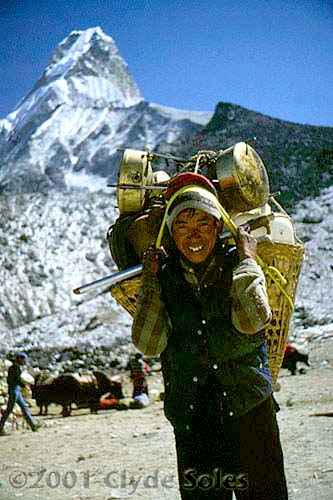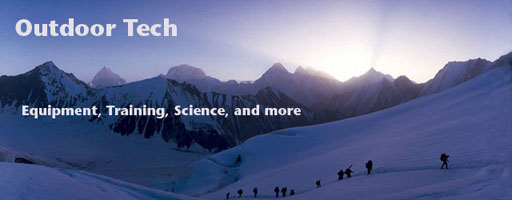 Unless I'm using poles for skiing or hiking, I often get tingling in my finger tips while carrying a heavy pack. It turns out I'm not alone and the problem may be more than a minor nuisance, loss of fine motor control and increased fatigue may also be problems. Last month, a paper was presented at a meeting of the American Physiological Society that demonstrated how much even a moderate pack affects blood flow.
Unless I'm using poles for skiing or hiking, I often get tingling in my finger tips while carrying a heavy pack. It turns out I'm not alone and the problem may be more than a minor nuisance, loss of fine motor control and increased fatigue may also be problems. Last month, a paper was presented at a meeting of the American Physiological Society that demonstrated how much even a moderate pack affects blood flow.
Using ultrasound and a pulse oximeter, the scientists measured brachial artery pressure as well as capillary flow in the finger tips. After 10 minutes, only a 26 pound load was sufficient to reduce blood flow in the arm by about 43% and in the finger tips by about 54%. They blame this on the straps compressing the axillary vein. It's particularly noteworthy for mountaineers since this reduction could make us more prone to frostbite.
The study suggests that redesigning pack straps could improve blood flow. Unfortunately, the paper doesn't indicate which pack they tested on subjects but I'd guess it was a standard S-shape design. Nor does it mention whether a sternum strap was used, a common "feature" that tends to increase pressure on that axillary vein while impeding breathing efficiency.
This study reminds me of the tumpline that Yvon Chouinard was selling in the early 1980's (for $5.50). Based on the design used by porters in Nepal, this simple strap put nearly all the weight on the head. Of course it never caught on because Westerners generally lack strong neck muscles.
However, a study published in Nature in 1986 found that we were too quick dismiss this low-tech load carrying device. Normally there is a straight line increase in energy cost of carrying extra weight; e.g. add 20% of body weight, consume 20% more energy. The researchers found that this did not apply when the weight is carried on the head. Measurements of African tribe women walking on a treadmill showed that the could carry 20% of their weight without any increase in energy consumption versus unweighted. Beyond that, the increase was proportional with 30% of body weight increasing energy cost by 10% and 40% of body weight requiring 20% more energy. Yet another reason those Sherpas kick our butts at high altitude.

1 comment:
Good find Clyde. A few thoughts on the subject from Gregory Packs founder Wayne Gregory are here http://www.gregorygoesthere.com/backpack-tech/whats-load-transfer-got-to-do-with-it/
Post a Comment